Your complete guide to Christmas 2019
The winners, losers and trends that defined the golden quarter


Christmas 2019 was far from merry for some retailers. Total sales in November and December dropped 0.9% year on year, while like for likes dipped 1.2%, according to the British Retail Consortium (BRC).
In some ways, retailers had the odds stacked against them. Mild weather in October hit fashion sales at the start of the season, causing a pile-up of stock; consumer confidence was unsurprisingly volatile as a result of the ongoing saga of Brexit; and the first December election since 1923 added an unhelpful distraction for shoppers.
All this led to cautious consumer spending.
Morrisons chief executive David Potts notes: “Consumer confidence has been low over an extended period now. That continued throughout this period, where consumers were quite a bit more than savvy.
“They were quite cautious in their spending, with concerns around the macro environment – the country’s economic prospects – as well as their own personal finances.”
Retailers had hoped for a sales fillip post-election with the certainty of a majority government being voted in. However, Sainsbury’s boss Mike Coupe says it brought “no significant change”.
Mixed fortunes
Against this backdrop, some retailers inevitably floundered. Card Factory, Superdry and Joules all issued profit warnings.
But it was not all doom and gloom, and there were many successes worth noting.
Confounding critics who claim the department store is dead, upmarket players Fortnum & Mason and Selfridges both reported impressive performances, with like for likes up 13% and 5% respectively.
Meanwhile, mainstream department store Next was a festive winner as full-price sales rose 5.2% between October 27 and December 28.
In this guide, produced in association with PwC and Cisco, we delve into the trends that shaped the 2019 Christmas trading period, what separated the winners from the losers and what lessons retailers can learn to nail Christmas 2020.
Chapter 1: Christmas trading league table
Click on the retailer’s name in the table below to find out more about its Christmas performance.
| Retailer | Period | Like-for-like sales 2019 (%) | Like-for-like sales 2018 (%) |
|---|---|---|---|
| Boohoo | Four months to December 31 | 44* | 15* |
| Asos | Four months to December 31 | 20º | 13* (three months to February 28) |
| Reiss | Seven weeks to January 18 | 18* | NA |
| Mountain Warehouse | 13 weeks to December 29 | 16.2* | 12* |
| Seasalt | Five weeks to January 4 | 14* | 35* |
| Fortnum & Mason | Five weeks to December 29 | 13 | 12 |
| Hotel Chocolat | 13 weeks to December 29 | 11º | 15º |
| Lidl | Four weeks to December 29 | 11* | 8* (six weeks to December 30) |
| Naked Wines | 10 weeks to December 31 | 11* | 15.9* |
| Greggs | Three months to December 28 | 8.7 | 5.2 |
| Aldi | Four weeks to December 24 | 7.9* | 10* (seven days to December 23) |
| Pets at Home | 12 weeks to January 3 | 7.2 | 4.7 |
| Very.co.uk | Seven weeks to December 27 | 6.1 | 8.8 |
| Dobbies | Nine weeks to December 29 | 6 | 8 (six weeks to December 30) |
| Hobbycraft | Five weeks to December 24 | 5.3 | 9.5 (six weeks to December 24) |
| Next | Nine weeks to December 28 | 5.2** | 1.5** |
| Dunelm | 13 weeks to December 28 | 5 | 9 |
| Selfridges | 1-24 December | 5* | 8* |
| Primark | 16 weeks to January 4 | 4.5* | 4 |
| Majestic Wine | Three months to December 30 | 4.3 | 6.3 (10 weeks to December 31) |
| Booths | Three weeks to January 5 | 3.5* | 3.3* |
| Holland & Barrett | Three months to December 31 | 3.3 | NA |
| Spar | Four weeks to December 29 | 2.6 | NA |
| The Works | 11 weeks to January 12 | 1.5 | 4.5 |
| Halfords | 14 weeks to January 3 | 0.8 | -2.2 |
| Matalan | Five weeks to January 4 | 0.6* | 4* |
| Tesco | Six weeks to January 4 | 0.4 | 2.6 |
| Waitrose & Partners | Seven weeks to January 4 | 0.4 | 0.3 |
| B&M | 13 weeks to December 28 | 0.35 | -1.6 |
| Marks & Spencer | 13 weeks to December 28 | 0.2 | -2.2 |
| Dixons Carphone | 10 weeks to January 4 | 0 | 1 |
| Card Factory | 11 months to December 31 | -0.6 | 3.4 |
| Sainsbury’s | 15 weeks to January 4 | -0.7 | -1.1 |
| WHSmith | 20 weeks to January 18 | -1 | 0 |
| Morrisons | 22 weeks to January 5 | -1.7 | 3.6 (nine weeks to January 6) |
| John Lewis & Partners | Seven weeks to January 4 | -2 | 1 |
| Moss Bros | 24 weeks to January 11 | -3.2 | -1 (23 weeks to January 5) |
| N Brown | 18 weeks to January 4 | -4* | -1.6* |
| Joules | Seven weeks to January 5 | -4.5* | 11.7* |
| Topps Tiles | 13 weeks to December 28 | -5.4 | -1.4 |
| Quiz | Seven weeks to January 4 | -9.3º | 8.4* (six weeks to January 5) |
| Superdry | 10 weeks to January 4 | -15.8º | -1.5º (four months to January 26) |
Chapter 2: The trends that shaped Christmas
- Lacklustre Christmas sales posted as consumers resort to “recessionary behaviour”
- Black Friday outshines Christmas as discounting remains mainstay of festive trading
- Shoppers failed to trade up in food
Last year was a turbulent one for retail – the worst on record according to some – so it’s no surprise that Christmas trading was tough.
In the autumn, consumer confidence was at its lowest pre-Christmas level since 2014 as retailers entered the golden quarter, according to PwC’s Consumer Sentiment Survey. The ongoing Brexit saga, along with political and economic uncertainty, led to customers behaving more cautiously this Christmas.
Sainsbury's Coupe surmises: “The reality is that customers have more money in their pockets than they did this time last year; they are just careful in the way they are spending it.”
Meanwhile, M&S boss Rowe highlighted “recessionary behaviour” by consumers.
This resulted in lacklustre sales for the sector this Christmas, which is borne out in the BRC’s figures, though it must be pointed out that some notable growth businesses, including Amazon and Primark, do not contribute to this sales data.
“The reality is that customers have more money in their pockets than they did this time last year; they are just careful in the way they are spending it”
This muted performance is not just down to cautious consumers. Tesco boss Dave Lewis believes widespread promotional activity led to a “subdued” grocery market.
“Going into Christmas it was pretty clear that people were uncertain, unsure, and that does translate into people being a little bit more cautious in how they spend their money at Christmastime,” says Lewis.
“But I think it is more a feature of the investments that ourselves and others have made. There have been quite a lot of investments – for some people that was promotional, for others it was just price reductions. That has an impact in terms of headline market growth numbers.”
Discounting was once again rife this Christmas. However, according to PwC’s Promotions Survey, the amount of retailers on promotion was broadly in line with last Christmas and slightly lower than in 2017.
The hard-hit fashion sector was particularly discount-heavy following a difficult start to the autumn/winter season. Mild weather conditions left many retailers with lots of unsold stock to shift going into key Christmas trading.
Rowe and Superdry founder Julian Dunkerton called out “unprecedented levels of discounting” across the market, and both acknowledged that impacted sales as shoppers were tempted by bargains at rival retailers.










The unique shape of Christmas 2019
After the damp squib of Black Friday 2018, where sales values fell year on year, the promotional event was back on form in 2019. Sales values soared 16.5% on the day, according to data from Barclaycard, which processes £1 of every £3 spent in the UK.
BRC chief executive Helen Dickinson said its figures showed Black Friday “overtook” Christmas to become the “biggest shopping week of the year”.
The timing of Black Friday on November 29 encouraged more spend. The event fell after payday in 2019 so shoppers had more cash to spend, but the late timing also meant it occurred during the peak present-buying period so it cannibalised what could have been full-price sales.
PwC retail director Kien Tan says although the overall market was more disciplined about when it discounted, with slightly fewer retailers on promotion in the weeks between Black Friday and Christmas, the short period between the two made it difficult for some retailers to “re-establish themselves into full-price and back again”.
The election effect
After the peak of Black Friday there was a lull in sales, exacerbated by the first December general election since 1923.
Card Factory chief executive Karen Hubbard triggered a profit warning post-Christmas and cited the general election as a factor that impacted footfall.
Following the election result, which brought the certainty of a majority government, retail bosses were hoping for a sales fillip. However, Coupe says this failed to materialise.
He reported “no significant change in terms of trading” post-election and warned the UK was “still in relatively uncertain times”.
PwC’s Consumer Sentiment Survey, conducted in early January, shows net sentiment is up 10 points since September, which is the best result in more than three years.
However, Tan says there was too little time between the election and Christmas for any boost in sentiment to lift sales.
Trading did accelerate in the week before Christmas, creating what Coupe refers to as a “twin peaks” trading pattern. But the last-minute rush was not as dramatic as some had hoped for.
John Lewis Partnership chair Sir Charlie Mayfield says: “There was a dip after Black Friday and then the [Christmas] rush was more subdued than had been previously.”
Experts believe the late Black Friday brought Christmas spending forward.
“This discounting bonanza pulled Christmas trading forward, demonstrated by a drop in footfall of 6.1% over the third and fourth weeks of December”
This had a notable impact on footfall, which dipped 2.5% year on year in December, and resulted in a “noticeable decline over the two weeks leading up to Christmas”, according to data company Springboard.
Springboard marketing and insights director Diane Wehrle says: “Essentially, this discounting bonanza pulled Christmas trading forward, demonstrated by a drop in footfall of 6.1% over the third and fourth weeks of December, which was nearly three-times as large as the 2.2% drop in the same weeks in 2018.”
Declining footfall is certainly not a new trend. In fact, it has declined in December in all but one year since 2009. However, Springboard said this December’s 2.5% drop was at the “upper end of the scale of decline” and reflected the caution and “spending restraint of consumers”.
Christmas Day falling midweek meant the last-minute rush was later than ever.
The busiest day of Christmas trading is traditionally Super Saturday, the final Saturday before December 25. However, a number of retailers said Monday, December 23, usurped this, including Tesco, which said it was the “biggest ever day of UK food sales in our history”.
Waterstones chief executive James Daunt says: “Christmas came later this year, and every time it falls on a Wednesday you have to whack everything into the last four days.
“It was fine in the end, but I found it rather nerve-wracking.”
Price matters
The resurgence of Black Friday this year demonstrated a consumer seeking out value.
Morrisons boss Potts admits “consumers were quite a bit more than savvy” compared with previous years and sought out deals.
Rowe says some M&S customers were seduced by discounts across the market.
“We’re seeing people more attracted to discounting in some areas,” he says.
Festive food
Supermarkets recorded the slowest Christmas sales growth in four years, according to Kantar, with just a 0.2% sales rise in the golden quarter.
It was a disappointing Christmas for the big four, with Tesco the only supermarket reporting like-for-like sales growth, albeit a small 0.4% rise.
How the grocers performed
| Retailer | Period | Like-for-like sales 2019 (%) | Like-for-like sales 2018 (%) |
|---|---|---|---|
| Lidl | Four weeks to December 29 | 11.0* | 8.0* (six weeks to December 30) |
| Aldi | Four weeks to December 24 | 7.9* | 10.0* (seven days to December 23) |
| Tesco | Six weeks to January 4 | 0.4 | 2.6 |
| Waitrose & Partners | Seven weeks to January 4 | 0.4 | 0.3 |
| Marks & Spencer | 13 weeks to December 28 | 0.2 | -2.2 |
| Sainsbury’s | 15 weeks to January 4 | -0.7 | -1.1 |
| Morrisons | 22 weeks to January 5 | -1.7 | 3.6 (nine weeks to January 6) |
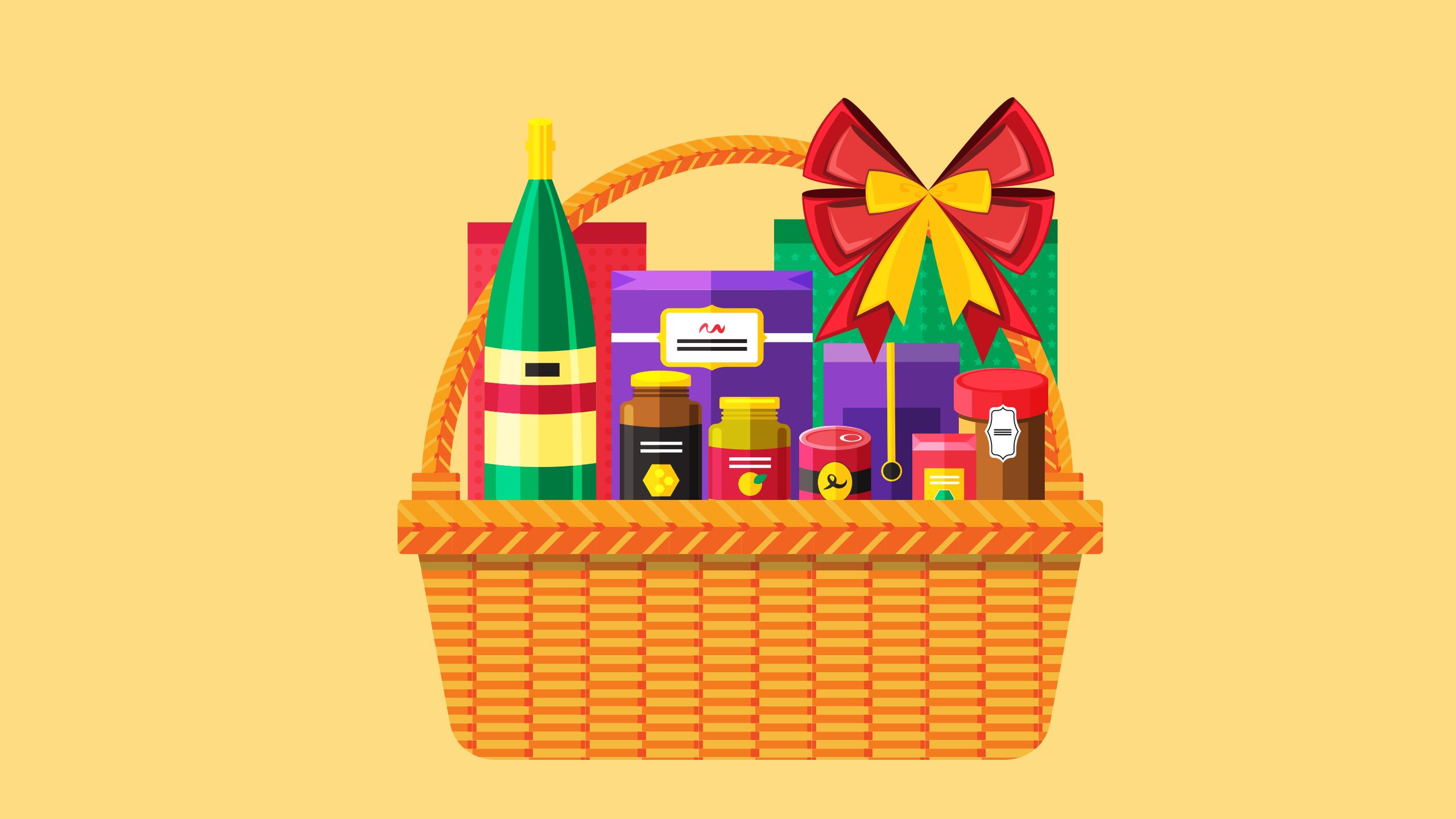
The discounters were the big beneficiaries, with Lidl’s sales surging 11% over the four weeks to December 29, while Aldi revenue jumped 7.9% in the four weeks to Christmas Eve.
Customers switched £110m of spend across to Lidl from other supermarkets during the festive period, according to the discounter.
The German retailers benefited from the trend towards value.
Grocery is an area where people usually trade up at Christmas, treating their families to a slap-up festive feast, but a thriftier approach was evident this year.
Sainsbury’s, the only big-four grocer to provide a figure on sales of its premium range specifically, reported a subdued uplift of 0.4% across Taste the Difference lines.
By contrast, shoppers had no problem trading up at the discounters.
Sales of Aldi’s Specially Selected range grew almost 8% as customers traded up to premium products during the Christmas period.
Aldi UK boss Giles Hurley said: “More customers than ever before shopped with us this Christmas because they knew Aldi offered unbeatable value on premium products and the lowest prices on festive essentials.”
“The retailers that did well gave a perception of value, so shoppers had the ability to come in to buy value, but trade up if they want to trade up”
On the other end of the spectrum, M&S’ more upmarket food offer struck a chord with consumers, with like-for-like food sales edging up 1.4% (compared with like-for-likes of 0.2% across the business as a whole). However, the grocer said the sales rise was down to “sharper value” across its Christmas range.
PwC leader of industry for consumer markets Lisa Hooker says: “The retailers that did well gave a perception of value, so shoppers had the ability to come in to buy value, but trade up if they want to trade up.”
To cater to a more price-conscious consumer, the big grocers invested in deals and prices.
Potts says retailers had to respond to a tough consumer environment “with more activities to get whatever spending is available”.
Morrisons focused its energies on “knockout” deals and prices, including three bags of British vegetables for £1 and whole salmon at £5 per kilogram.
A 'Christmas basket' of 400 items was £20 cheaper at Morrisons than last year.
Tesco boss Lewis says basket sizes were “smaller in terms of value” during the festive period as a result of the investments it made in price.
A basket of 21 “typical” festive products was £2.28 cheaper year on year as a result of promotions such as its ‘Festive Five’ vegetable offer.
Coupe says Sainsbury’s prices “were better overall”, too.
However, it was general merchandise, rather than food, that was a weak spot for the grocers, and an area of weakness across the wider market.
In Tesco’s last reported quarter to November 23, UK total sales dipped 0.5% and like for likes slipped 0.4%, due to a negative 0.4% impact from reduced general merchandise sales.
Meanwhile, general merchandise sales at Sainsbury’s – which owns Argos – tumbled 3.9% over the golden quarter.
Once again, the discounters seemed to confound this trend, with sales up 9% in Lidl’s Middle of Lidl general merchandise categories.
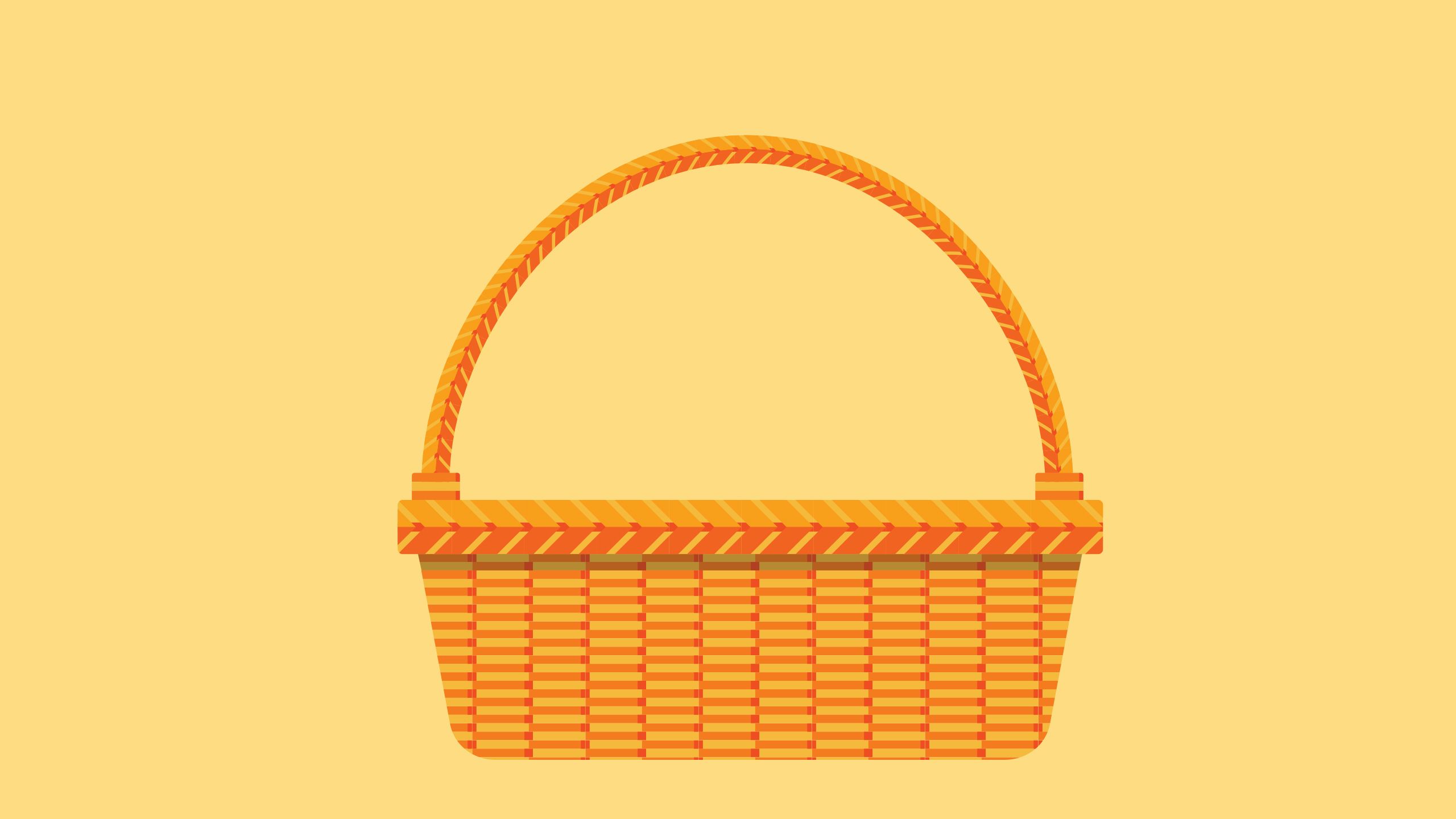
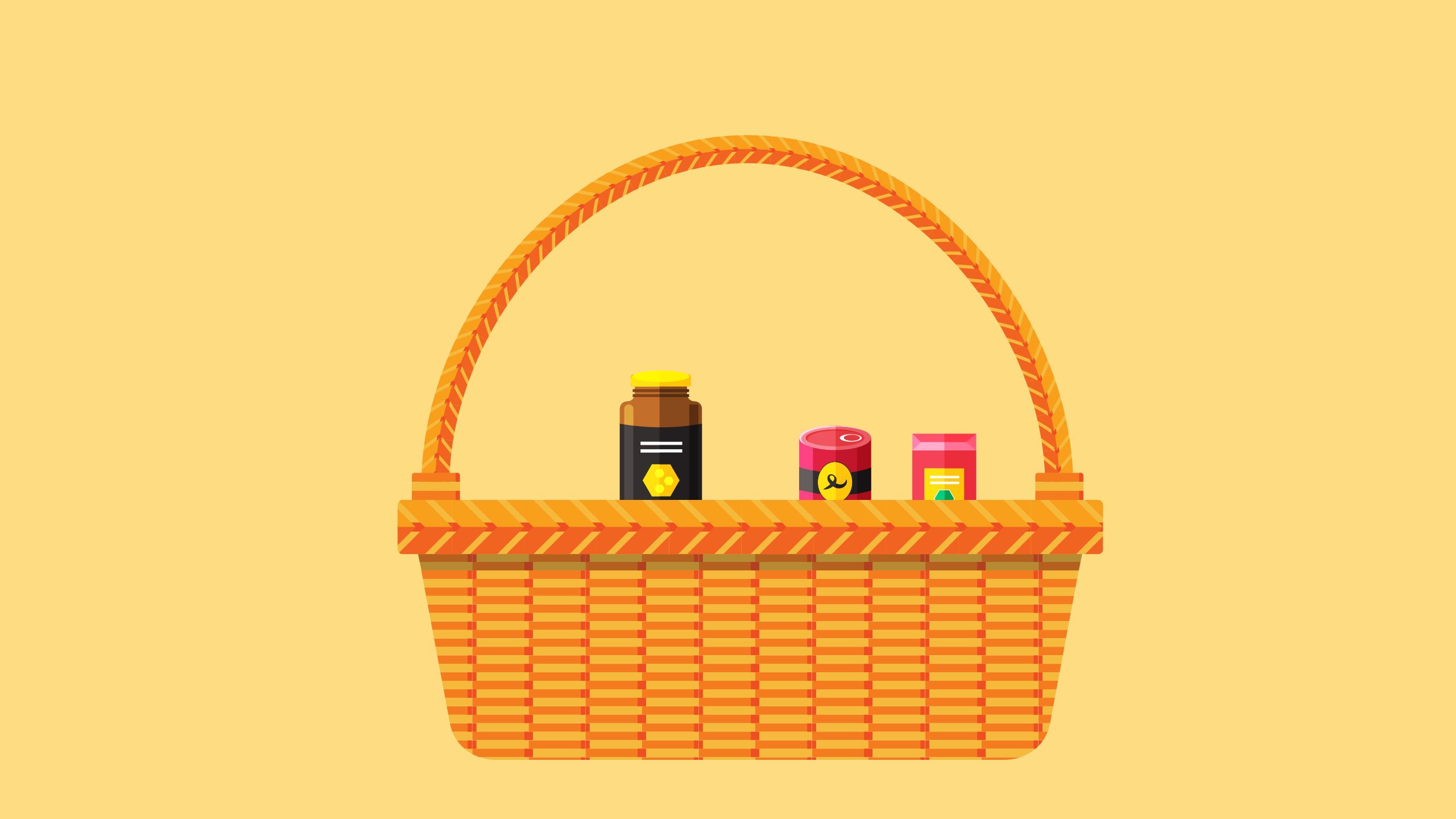
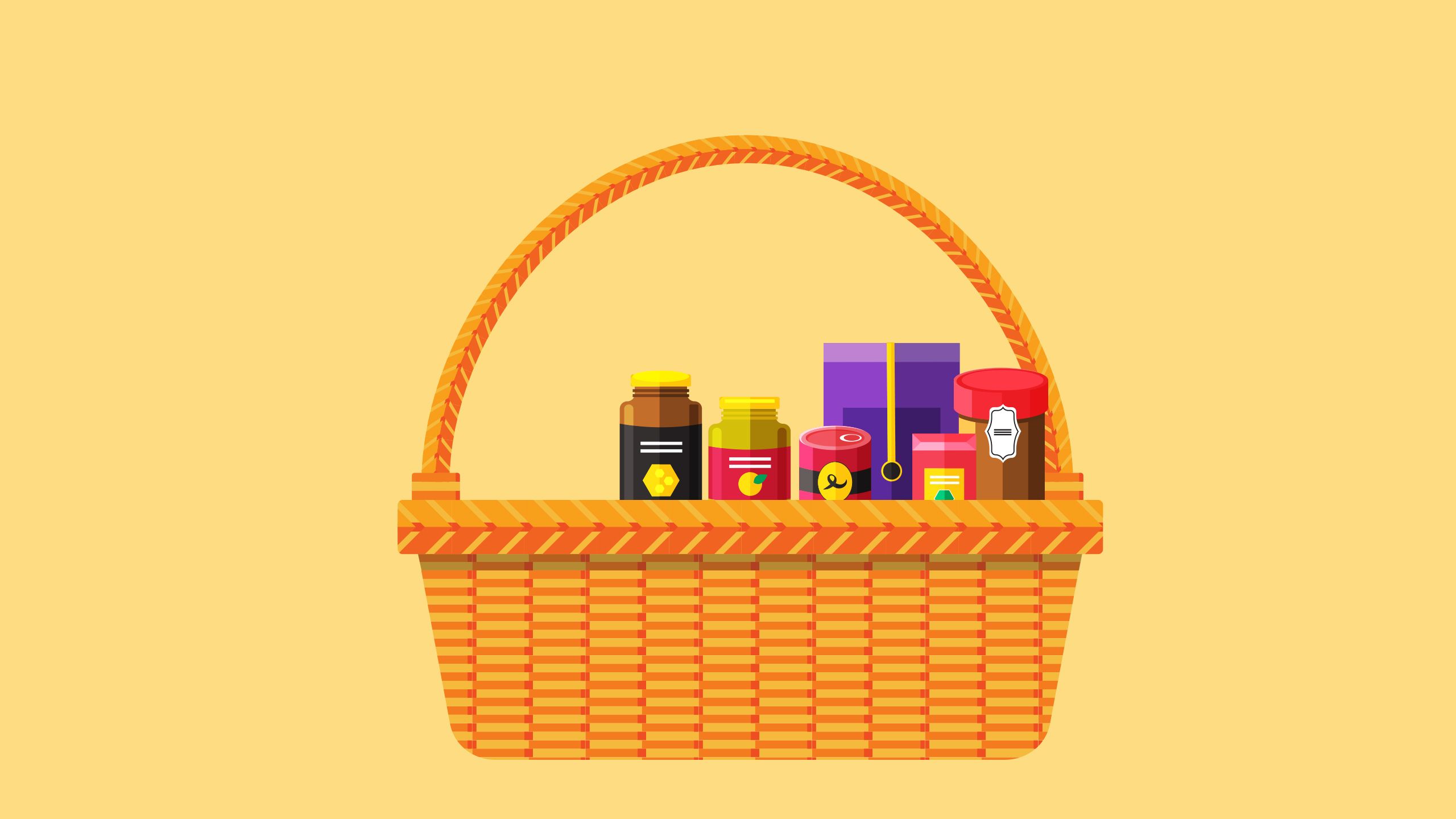
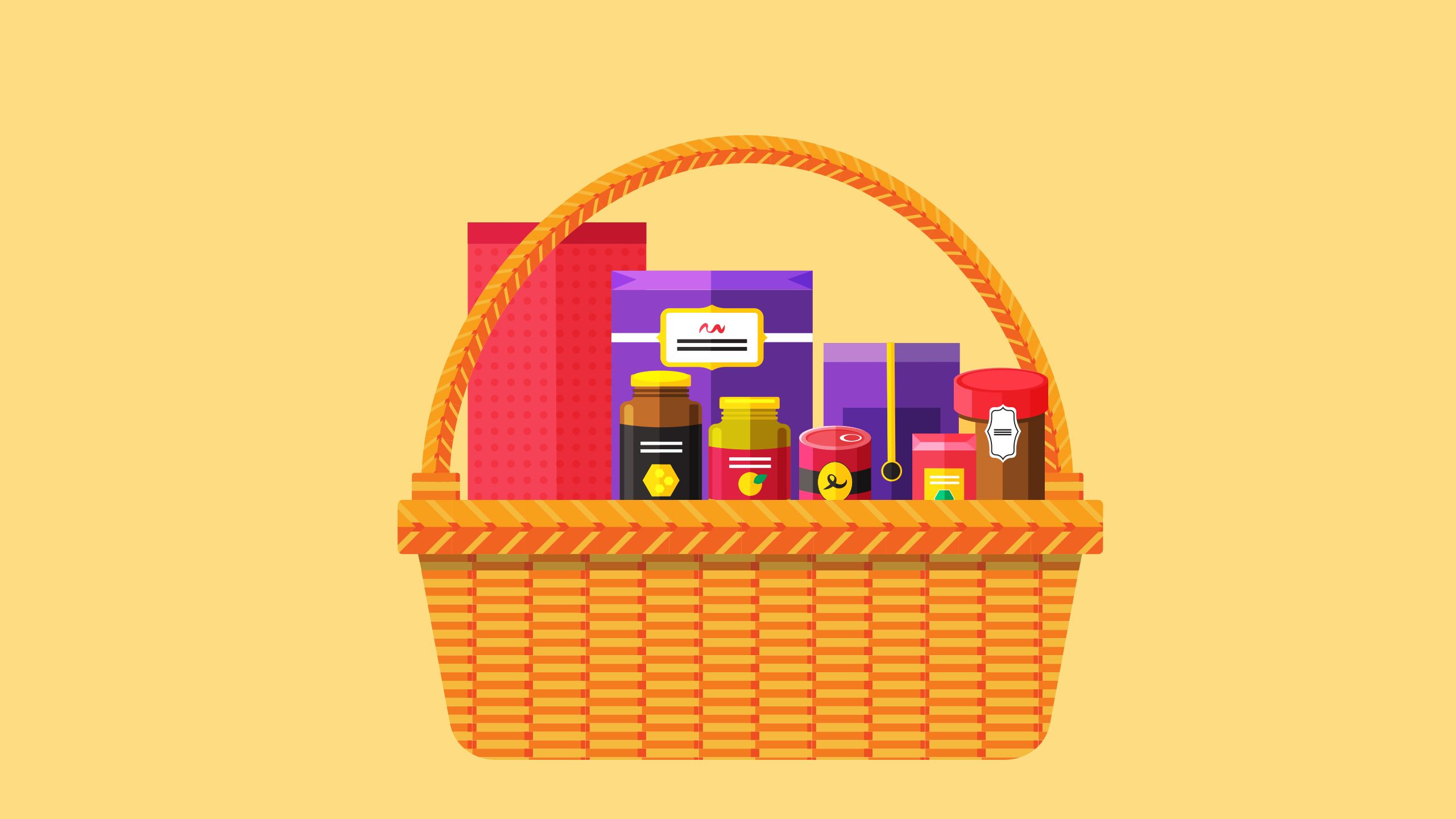
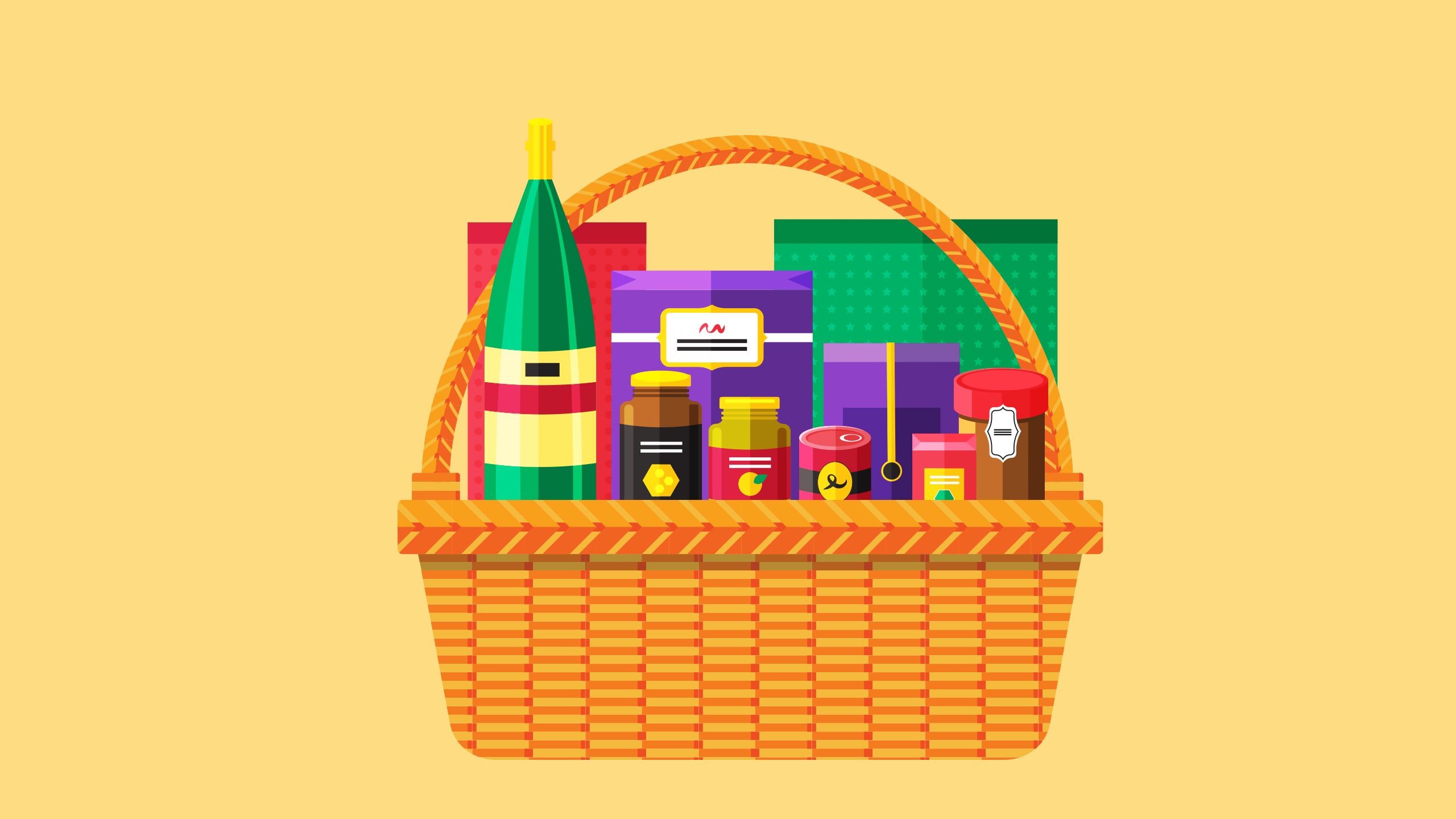




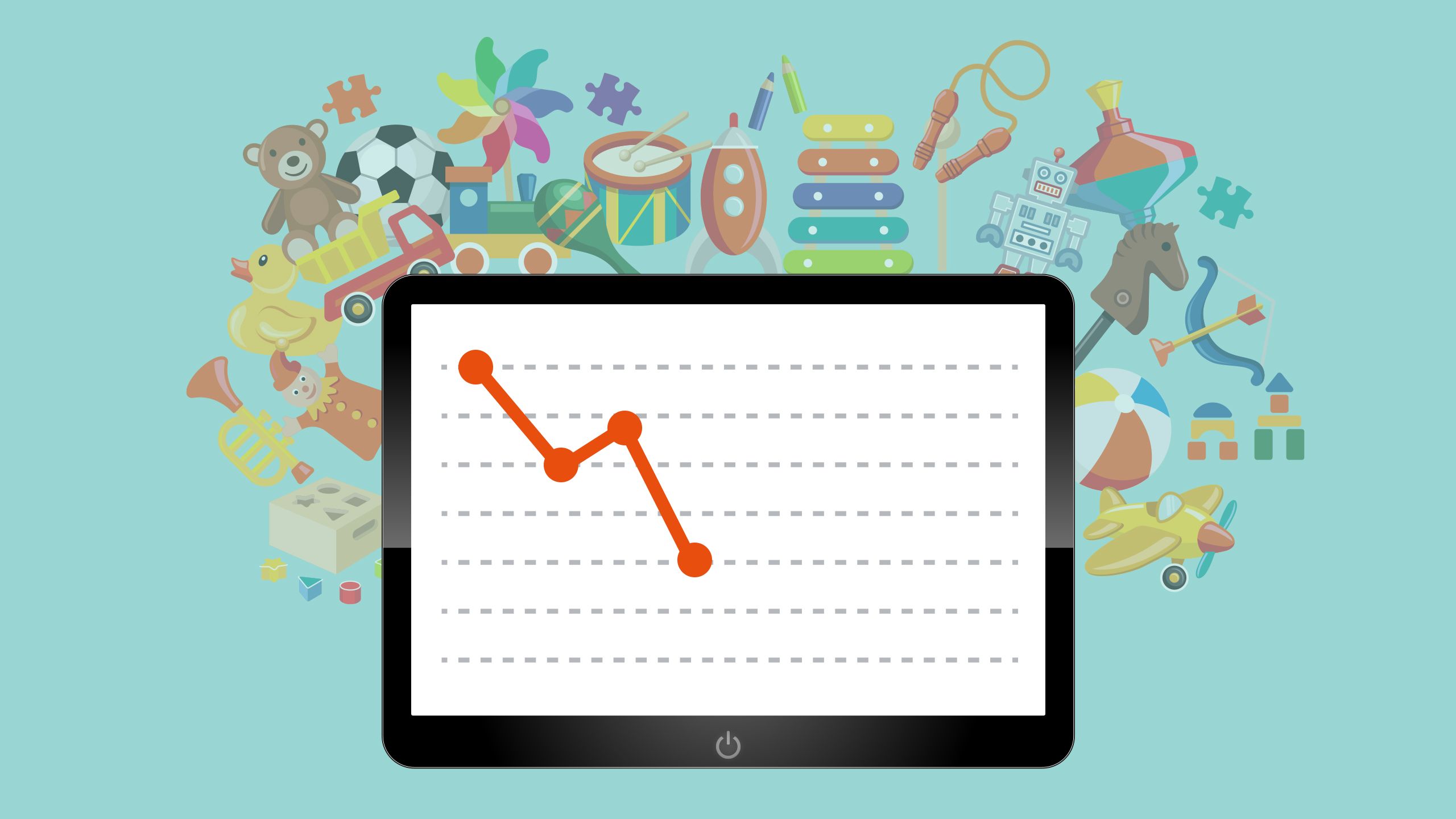

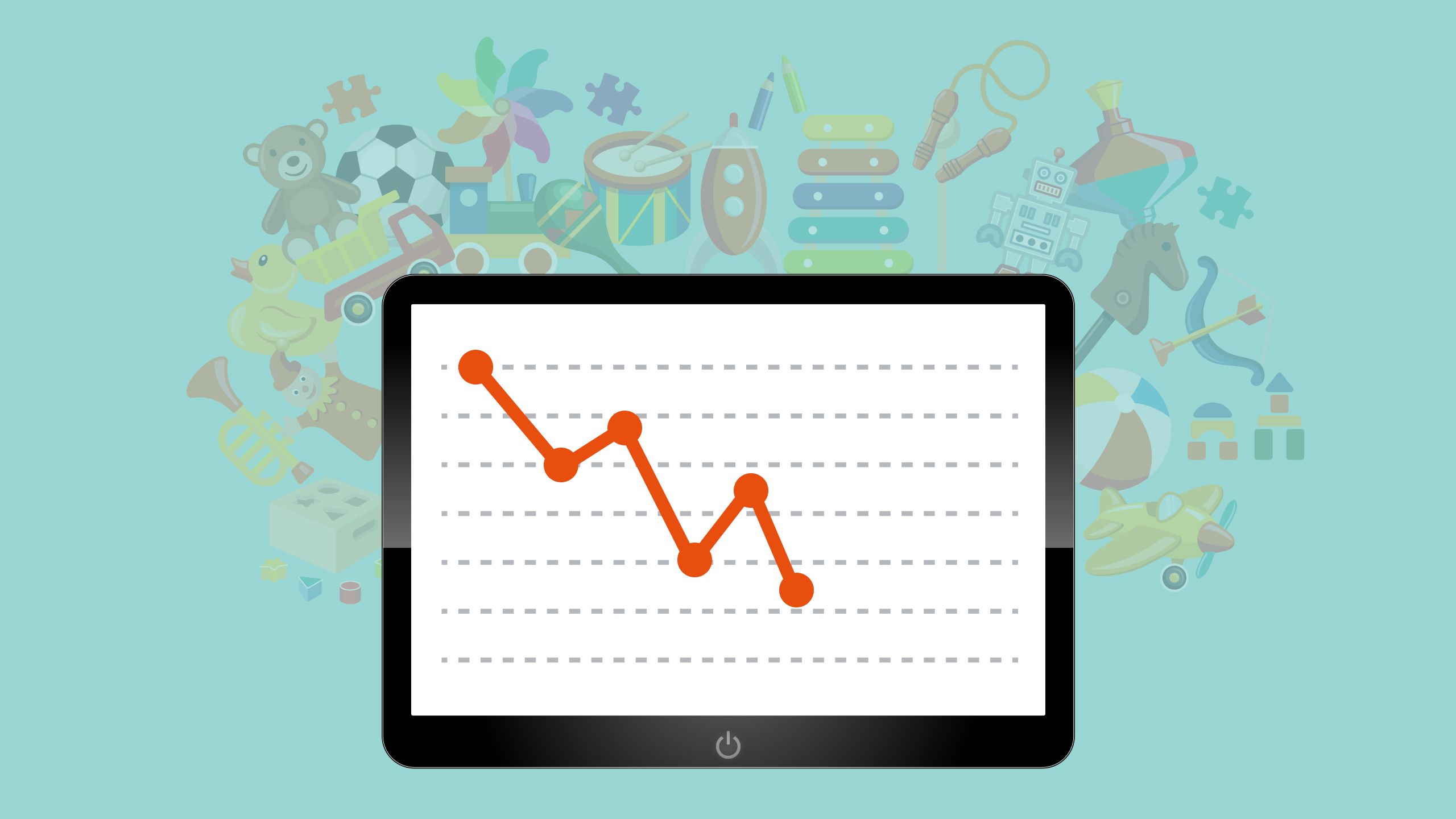



Trouble in toytown
Sainsbury’s general merchandise decline was largely down to ailing toys and gaming sales. Coupe says the toy market shrunk by 10% year on year, while gaming plunged “over 35%”.
He put the decline down to shoppers opting to buy electronics such as iPads.
“If you buy an iPad for a few hundred quid, that’s a lot of toys in Argos. So, if people are swapping consumer electronics and other related items for toys, then that would, at least in part, be some of the explanation,” says Coupe.
Sainsbury’s was not the only retailer to report subdued toy sales.
The Entertainer chief executive Gary Grant said: “December has not traded as badly as October and November, and therefore it is better than we expected at the beginning of December, but nothing like as successful as we had planned as early as June.”
B&M also reported “disappointing sales” in toys, which held back like-for-like sales at the retailer.
This decline in toy sales comes despite a number of big players, such as Toys R Us and Mothercare, disappearing or diminishing in size over the past couple of years.
Coupe hinted that the Sainsbury’s group, which, including Argos, is the largest toy retailer in the UK and holds around 18% of the gaming market, could reduce its exposure to the toy market.
This is a move that Tesco has already made and one its UK boss Jason Tarry says has paid off.
Conscious consumerism
The shift away from buying toys could tie into a wider trend of conscious consumerism.
There has been a movement away from buying plastic toys because of concerns about mounting waste, with Burger King even removing toys from its kids’ meals last year.
“What people give at Christmas is changing. People are being more conservative with the volume of things that they’re buying, which is part of the sustainability thing we’ve been seeing for a while“
And there was further evidence that shoppers were thinking more about the planet, with retailers reporting greater conservatism over gift buying.
Rowe says: “What people give at Christmas is changing. People are being more conservative with the volume of things that they’re buying, which is part of the sustainability thing we’ve been seeing for a while.
“People are moving away from low-price gifts to something that has longevity and value.“
As a testament to this, Rowe notes that sales of cashmere rose 40% and 15% across M&S' menswear and womenswear lines respectively during the festive trading period.
The veganism trend was also evident this Christmas. Selfridges recorded a 96% surge in sales of vegan confectionery – presumably from a low base – and sold out of its newly launched vegan hamper.
PwC’s Hooker says: “There has been a trend towards more practical, slightly more sustainable gifting, which is not going to go away. People want to make sure the retailers they shop with have good sustainability credentials.”
This move towards more sustainable shopping is in a nascent stage, but it could lead to lower sales volumes in future. Retailers will need to react to protect sales by providing more ethical and meaningful gifting options.
Chapter 3: Who were the Christmas winners and losers?
In a broadly flat market, there were polarising performances from retailers and valuable lessons to be learned as to why some emerged as winners and others as losers.
Winner: Premium department stores
Much has been made of the decline of the department store in recent years, but stellar performances from Fortnum & Mason and Selfridges show there is still life in the format yet.
Fortnum & Mason’s like for likes jumped 13%, while Selfridges’ total sales rose 5%.
Both retailers benefit from their ‘destination‘ status and invest to make their stores a ‘must-visit’ at Christmas. While Black Friday may be an online-dominated shopping event, PwC’s Tan points out that the majority of people still carry out their Christmas shopping in physical stores, so these efforts are worthwhile.
Fortnum & Mason used breathtaking visual merchandising to transform the exterior of its Piccadilly flagship into a giant animatronic advent calendar.
Meanwhile, Selfridges’ shoppers were wowed by a walk-in snow globe in its Birmingham store and the theatre of iconic toy retailer FAO Schwarz’s shop-in-shop, complete with the giant piano made famous by the Tom Hanks movie Big, in its London flagship.
It’s interesting to note that, despite a floundering toy market, Selfridges' toy sales surged 31% from December 1 to Christmas Eve, largely down to this new concession.
Selfridges managing director Simon Forster cited the retailer’s “extraordinary customer experiences” as a reason behind its success.
Exclusive product also played its part. Sales of Fortnum’s iconic hampers soared 24%, while its new non-alcoholic sparkling tea product accounted for one in nine bottles of sparkling drink sold at the store over Christmas.
Selfridges and Fortnum's show that shoppers will still gravitate to department stores that innovate, have unique products and provide true experiences.
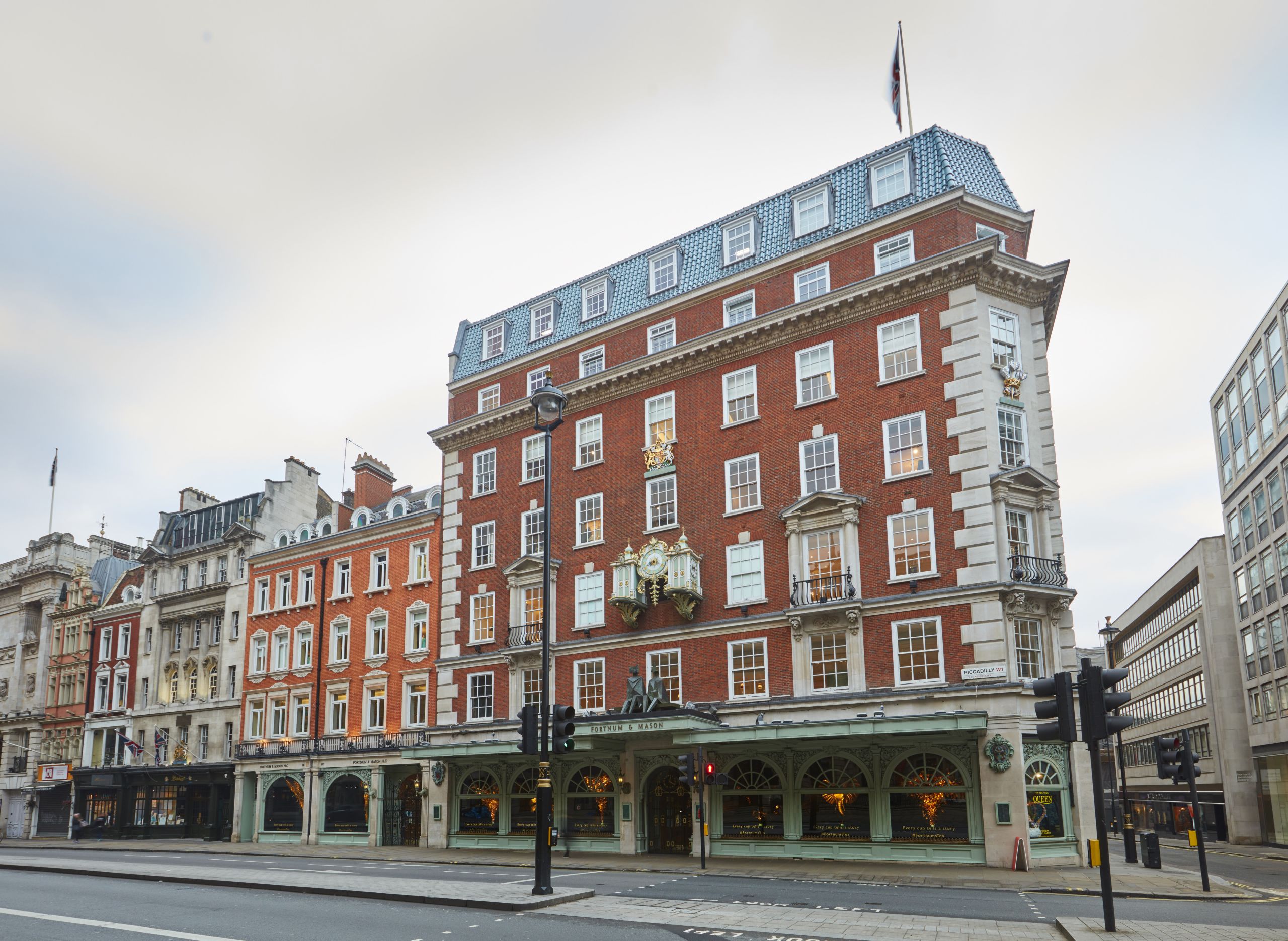
Loser: Morrisons
Morrisons emerged as a loser in the grocery world as like for likes excluding fuel dipped 1.7% in the 22 weeks to January 5.
Boss Dave Potts said the run-up to Christmas had been “unusually challenging” as shoppers were cautious about their spending.
In a highly promotional grocery market, Morrisons’ decision not to run a Black Friday deal hit sales.
The supermarket has a much smaller general merchandise business –which drives Black Friday sales – than the rest of the big four, but had run ‘Black Fivedays’ deals on bigger value packs of products in previous years to capture sales during the discounting event.
It opted not to run the promotion during Black Friday 2019 and Potts admits it missed the “halo effect” of the deal.
“That’s one of the things for us to reflect on, because we have probably relied on that springboard toward Christmas a little bit more than we had assumed,” he says.
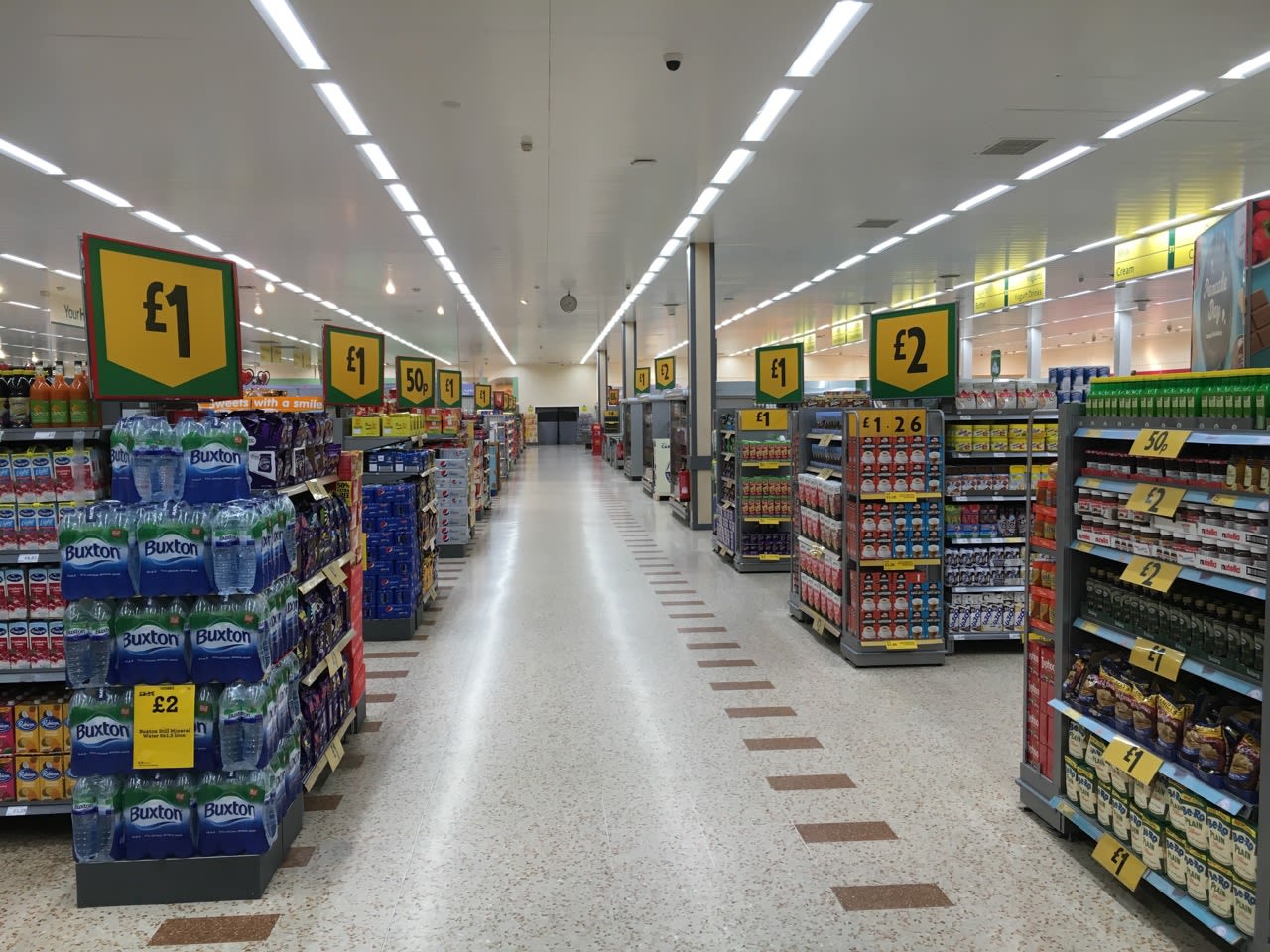
Winner: Mountain Warehouse
Mountain Warehouse is not exactly a Christmas destination, but it thrived – as it has for a number of years – over the festive period.
Fashion businesses may be blaming the weather for disappointing sales, but this outdoor retailer, which one could assume is also dependent on cold weather to sell its wares, reported an impressive 16.2% sales rise in its quarter to December 29.
Mountain Warehouse is a true specialist that knows its audience – outdoor enthusiasts and dogwalkers – but is also innovating.
Inspired by the success of Tiger and Hema, founder Mark Neale launched gift retailer Neon Sheep in 2017.
Sales at Neon Sheep more than doubled year on year during the golden quarter to £3.2m. The retailer has high hopes for the fascia, which has 25 stores, and plans to open a further 10 in 2020.
The new business has benefited from smart property deals in a depressed market.
Neale says the group’s success “proves the doom-mongers predicting the death of the high street are wrong”.
“If you have the right locations customers will come, and if you have the right products at the right price, and also provide great service, they will part with their hard-earned money,” he says.
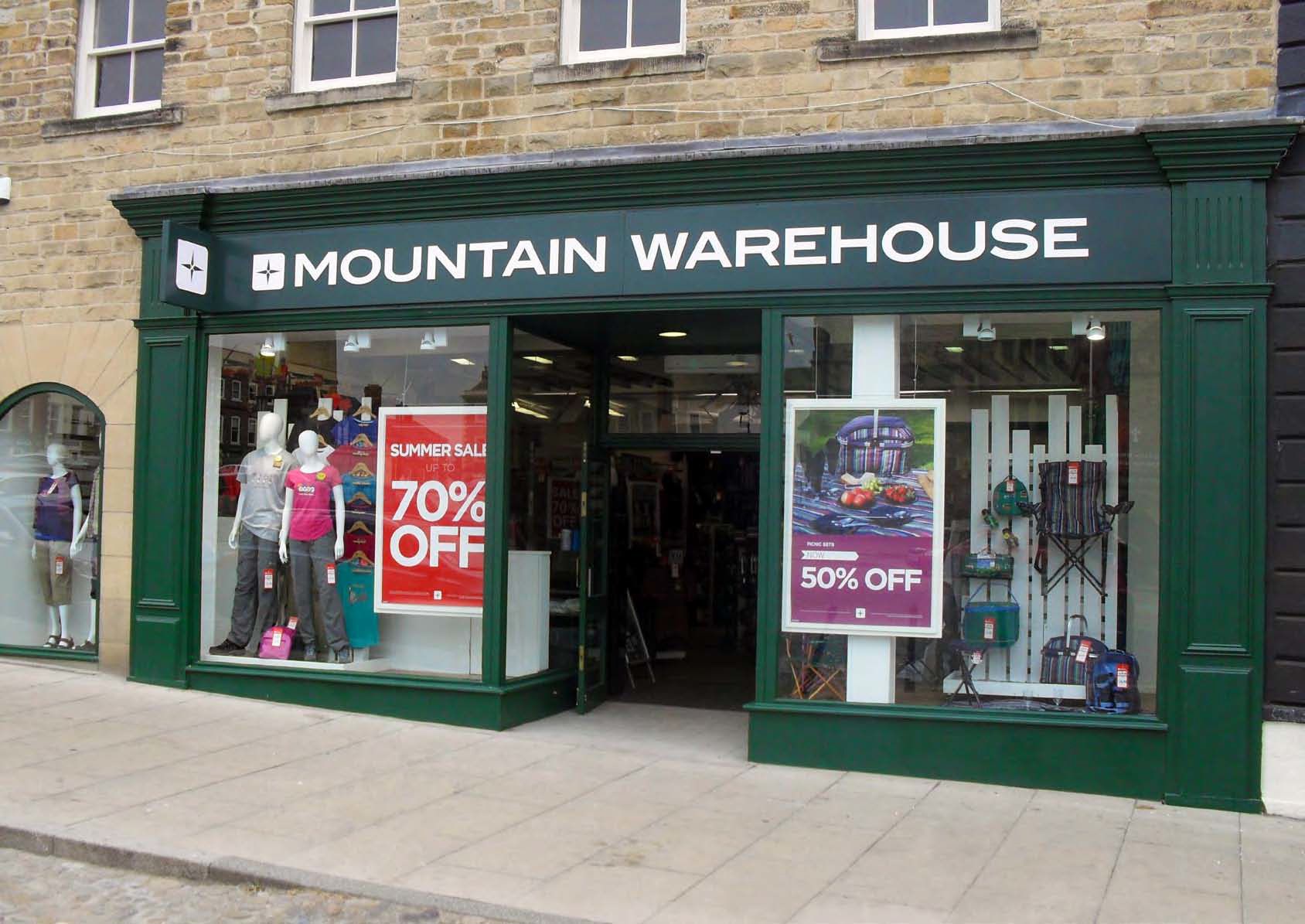
Loser: Superdry
Superdry founder Julian Dunkerton promised he could save Christmas when he was reappointed to the fashion retailer’s board earlier this year.
However, that proved to be a false promise. The fashion retailer triggered a profit warning following a 15.8% sales slump over Christmas.
Superdry attributed its sales decline to “unprecedented levels of promotional activity” from competitors, weak consumer demand and slow trading on older product.
The market was undoubtedly promotional, but the success of retailers such as Mountain Warehouse and Superdry rival JD Sports show that some could overcome such issues.
Superdry’s inability to navigate this market shows the importance of having product that customers covet.
Although Dunkerton claims he inherited unappealing product from previous management, one has to wonder whether the Superdry brand still resonates with its target audience.
It was a weak performance all round for the retailer, but, in contrast to Mountain Warehouse, its store sales were particularly poor, plummeting 18.5% over the Christmas period.
One bright spot was that it increased its percentage of full-price product to 88% of sales, compared with a meagre 46% the previous year.
This is in keeping with Dunkerton’s turnaround strategy of reducing discounting and building margin. However, it remains to be seen whether not playing in this highly promotional market is a risk that will pay off.
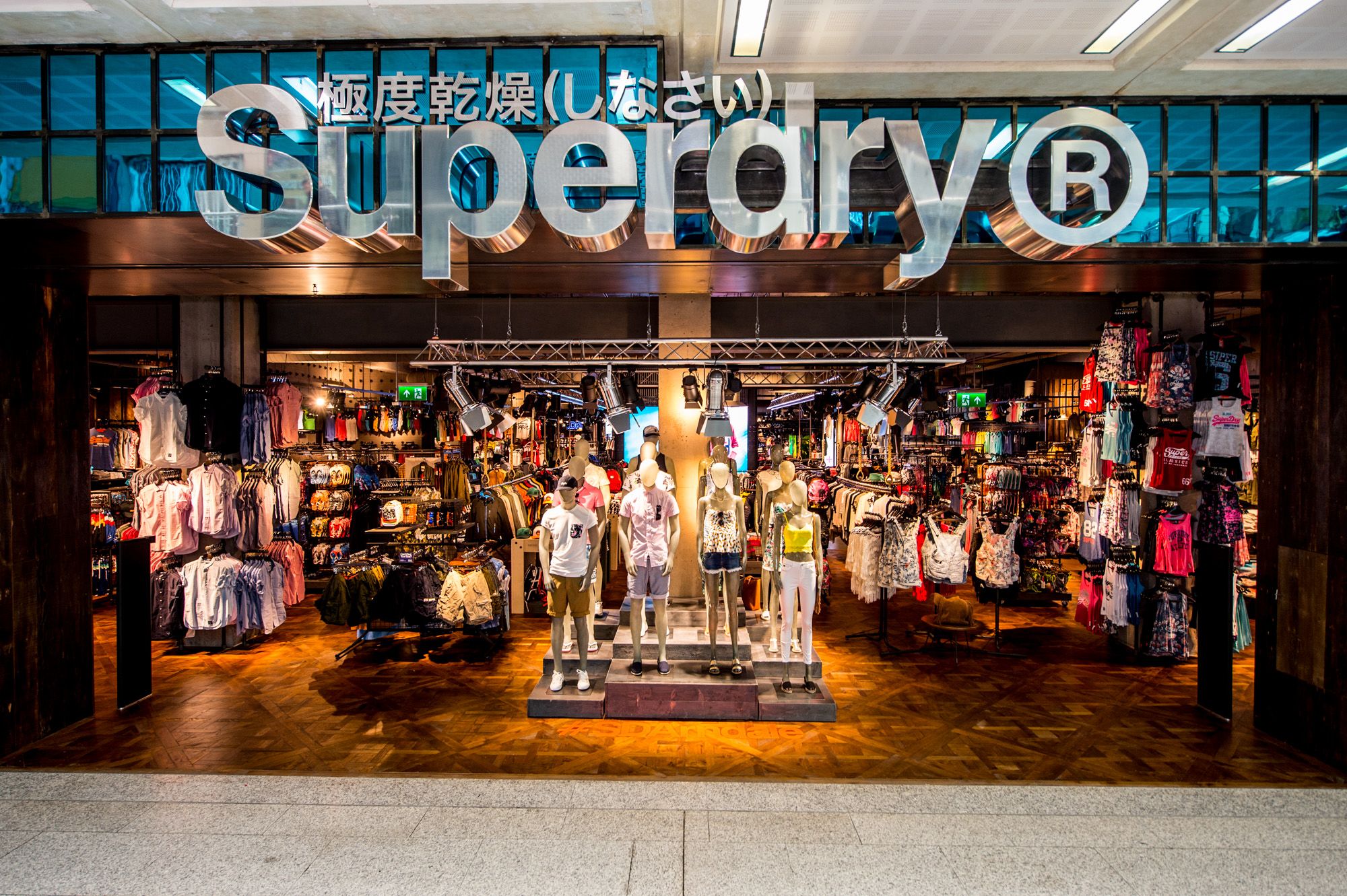
Winner: Next
Next is often referred to as the industry bellwether, but it is more accurately described as an industry out-performer.
This Christmas, the retailer’s full-price sales rose 5.2% – 1.1% ahead of internal expectations – leading it to up its full-year profit guidance.
Next’s cross-channel approach, and longstanding credit business, helps the retailer offset declining sales in its stores. While full-price store sales dipped 3.9%, online sales advanced 15.3%.
The retailer said it benefited from a much colder November than last year and the business, which prides itself on its operational prowess, improved stock availability in store and online to make sure shoppers could snap up bestsellers.
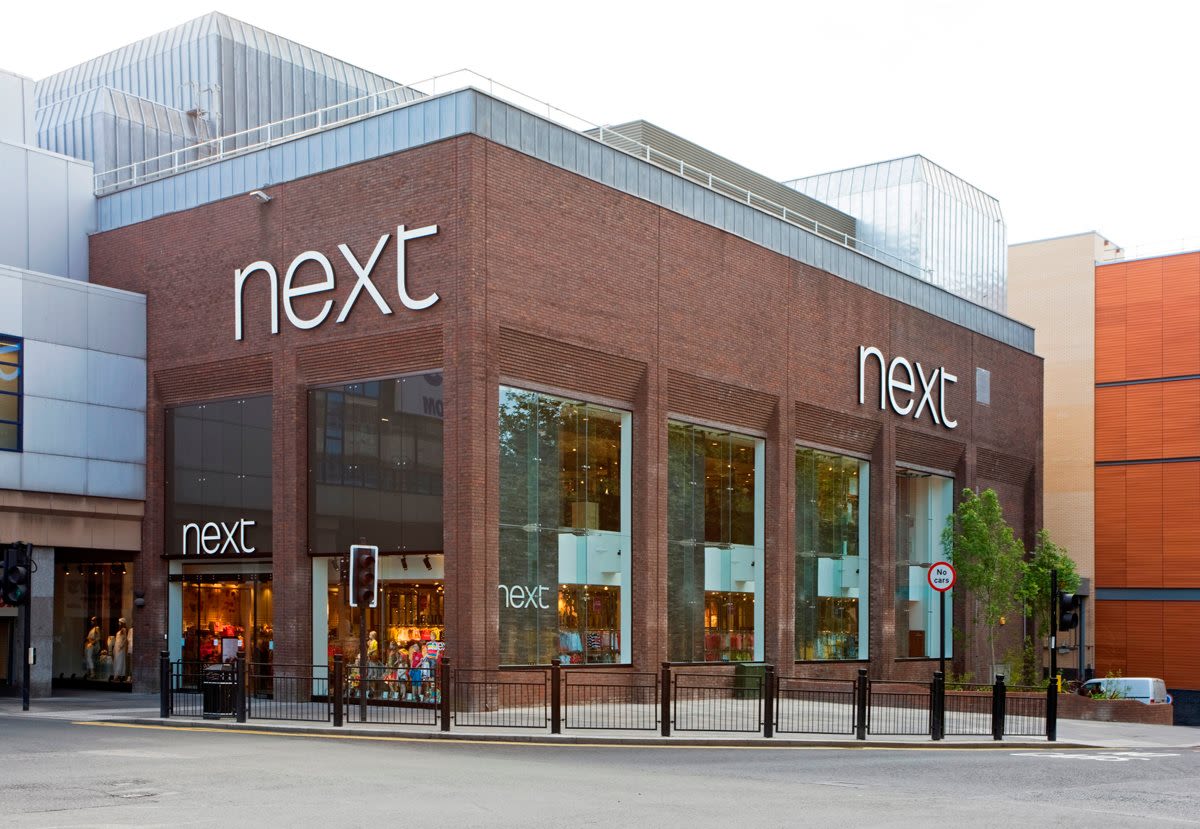
Loser: Joules
By contrast, one of the shocks of the trading period was Joules issuing a profit warning because of stock availability issues online.
The retailer’s sales were “significantly behind expectations” as sales dropped 4.5%.
A spreadsheet error led to Joules not being able to satisfy customers’ online demand and, with ecommerce accounting for half of Joules’ sales, this had a dramatic impact.
The error led to a £6m sales shortfall and a £3.5m impact on profits, according to broker Peel Hunt.
Although Joules chief executive Nick Jones says it was a one-off issue, and the retailer has taken steps to prevent it happening again, it shows there is no room for operational error during the golden quarter.
Joules also blamed the later fall of Black Friday for a slump in half-year profitability.
Joules suffered an 81.7% crash in statutory pre-tax profit to £1.7m in the 26 weeks to November 24, after booking £6.7m of exceptional charges relating to stores, head office premises and changes in distribution arrangements.
Joules said the results were impacted by the timing of the Black Friday sales bonanza, which falls in the second half of its current financial year, as opposed to the first half of 2018/19.
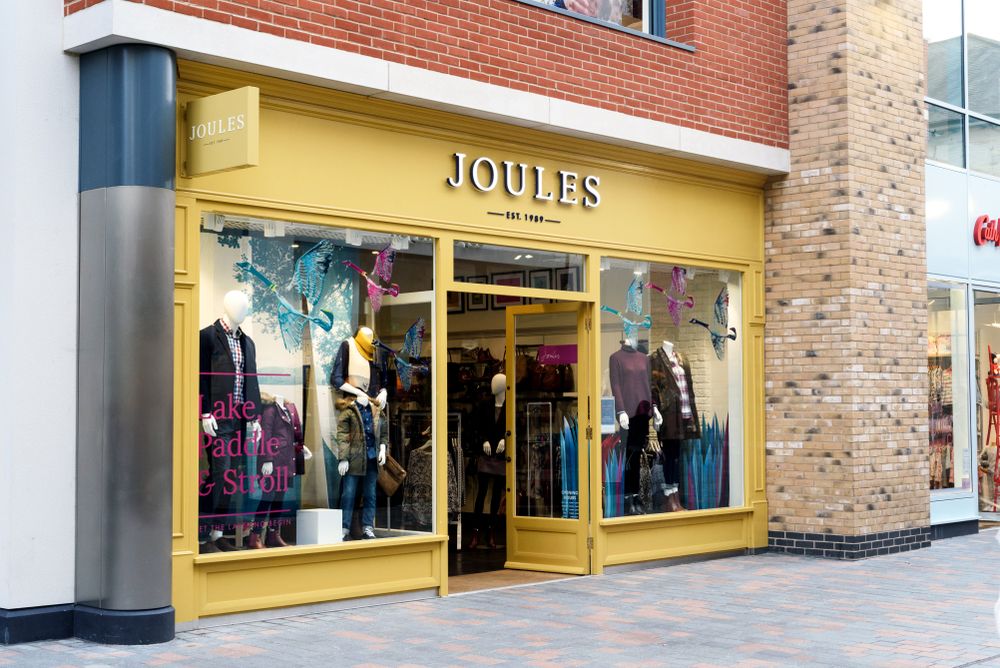

Three lessons from the golden quarter
1. Getting Black Friday right is crucial
Black Friday is most definitely here to stay and retailers need to work out how to make this event – the new peak of Christmas – work for them.
First, retailers need to decide whether to participate in the melee. Morrisons’ Dave Potts admits not running promotions hit the retailer as it did not benefit from the “halo effect” it brings.
However, despite M&S potentially losing out on sales, chief executive Steve Rowe is determined to keep his powder dry in order to preserve price integrity at the business.
“I’m a big believer in getting your prices and value right. The long-term impact of discounting is that people don’t trust your value,” he says.
Perhaps Next’s approach is the way forward. The retailer moved away from its stance of not discounting outside of its end-of-season Sale in 2017, when it launched its first Black Friday Sale – however, there was a very limited amount of stock included in the promotion.
By advertising its participation, Next benefits from the Black Friday footfall – in both the physical and online worlds – and hopes to get shoppers buying full-price items.
Buying items especially for Black Friday is an approach that works for electricals retailers, with AO.com working with big suppliers up to a year in advance to guarantee deals.
The big challenge of Black Friday this Christmas was its late timing and ensuring it did not cannibalise full-price sales of gifts.
With Black Friday 2020 also falling late in November, it’s a challenge to be faced head-on again this year, but also an opportunity to implement learnings from 2019.
Being strict with cutting off promotions after Cyber Monday, and adding newness to the offer following the event, can help entice shoppers into stores and preserve margin.
PwC ACTION POINT
“As Black Friday matures in the UK, it is a balancing act for retailers given only half of shoppers tell us that they are interested. However, we believe there is plenty of opportunity for organised retailers who are brave enough to communicate offers to shoppers, manage stock and margins, and offer genuine but selective, time-limited deals.”



2. Provide great value and unique product
Retailers can no longer rely on shoppers splurging at Christmas.
The grocers in particular noted cautious behaviour and the trend towards value. Retailers need to make sure they are offering shoppers the value they crave – if they don’t, competitors will.
The big grocers all invested in price over Christmas to woo shoppers and Tesco has started the new year by launching a fresh wave of price cuts, in a sign it expects this trend to continue.
In contrast to the value trend, premium department stores fared well. The likes of Selfridges and Fortnum & Mason are experts in offering customers unique products they cannot get elsewhere.
To win at Christmas, retailers must offer customers great value but also provide ample opportunity to trade up and buy something unique from them.
PwC ACTION POINT
“Consumers told us they’d spend a little less on Christmas this year, but the one area of spend that they continued to defend was food and drink. But, even here, ensuring there’s enough budget left for special treats meant economising in other areas, and successful retailers were the ones that recognised this.”

3. Store experience can still woo crowds
Black Friday may be a predominantly online event, but shoppers still head to the high street at Christmas, where they are seeking inspiration and a true experience.
The success of Selfridges and Fortnum's shows the strength of in-store experience. The pair pushed the boundaries in terms of store design and added unique and exciting concessions.
It is not just premium retailers that can use this tactic. M&S’ new store format, which it has rolled out to three locations, has impressed shoppers, while Primark’s Birmingham store – its largest to date – is attracting coach parties. The store, which spans 160,000 sq ft and features beauty parlours and a Disney cafe, has become a true destination – particularly so since Primark has no ecommerce operation.
The store is not dead – boring stores are dead.
PwC ACTION POINT
“Unlike Black Friday, which was overwhelmingly an online phenomenon about buying for oneself, consumers are still looking for inspiration for Christmas gifts. It’s no surprise that destination shopping centres and department stores proved that they could continue to defy the downwards trajectory of footfall affecting many other high streets.”

Partner messages

Lisa Hooker, leader of industry for consumer markets, PwC
Before Christmas, consumers suggested that they would spend a little less than in 2018. And that’s essentially what we saw: little or no growth across the market as a whole.
With little or no growth, there was greater divergence within the sectors. We saw some retailers outperforming in every category, while others significantly underperformed.
This year’s winners simply did a better job of encouraging consumers not just to spend more, but to spend more with them. They invested in their propositions, whether in price, range (including emerging trends), stores, payment options or multichannel and online offerings to differentiate themselves from the competition.
Looking ahead, it’s not all bad news for retailers. According to our January Consumer Sentiment Survey, shoppers are more confident and will be looking for reasons to spend. But, as ever, retailers will need to differentiate themselves from the competition, particularly as the battle for share of wallet intensifies in an environment where people will be spending the same, or even a little less.
"This year’s winners simply did a better job of encouraging consumers not just to spend more, but to spend more with them"
Retailers will need to give consumers a reason to shop with them. They need to offer the right products to the right people at the right time and for the right price, and make it easy to find the product, buy it and be able to afford it, whether that’s through credit or buy now, pay later.
It will also be increasingly important for retailers to be aware of – and be able to react to – relevant trends this year, such as conscious consumerism, the “green pound”, natural beauty, and ethical, sustainable and vegan products. They will also need to ensure communication with customers is relevant and, more importantly, recognise where they are engaging with it.
Understanding consumers and their customers in particular – how and where they shop, and how and where they want to shop – will be the differentiator for retailers looking for success.
Retailers that can effectively meet all of these challenges have every chance of success in 2020.
Retail Outlook 2020: Register now for exclusive early access
Amit Chetal, retail lead, Cisco
Retail is not just about the store or the transaction – it’s about the destination and lifestyle for each customer. Every day, consumers have choices: where will they shop, eat or go for entertainment?
The retailers that are winning are innovative, using integrated hardware, software and ecosystem partnerships. This enables them to drive an enhanced customer experience, driving lifetime loyalty.
The way people shop is changing – shopping centres and high streets with lines of shops are on their way out and all-day experiences are in. With retail spaces, customers are truly searching for a mash-up of entertainment, restaurants and shops.
For Cisco, revolutionising the store experience is top of mind. This was the main topic of discussion at the NRF Big Show 2020, the National Retail Federation’s annual conference: how to transform retail from just shopping for products into an overall lifestyle experience.
The key for retailers is how to connect their online and in-store experiences by marrying the best of both.
"On-boarding customers in a frictionless way is key to driving engagement, as is making it personalised and relevant"Add a quote source (optional)
During NRF, Cisco and its ecosystem partners showcased a new digital immersive experience by using the latest tech, including tap technology or near-field communication (NFC), combining wireless connectivity with location services to create a better customer experience.
NFC technology makes it easy and frictionless for customers to engage with the retail brand, wherever they are. On-boarding customers in a frictionless way is key to driving engagement, as is making it personalised and relevant.
This might be providing various interactive experiences for the customer: a trivia gamification aspect; a social area where shoppers can take and share images; a real-time sentiment survey; a chatbot function – all through their own mobile device.
With foundational technology investments, retailers can leverage data to gain key insights about shopper behaviour. This can better serve customers in stores, provide operational excellence and assist store staff to better serve customers.
Leveraging data-driven decision making is key to driving customer loyalty, basket size and a long-term connection with the customer – all of this made possible with technology.
Your complete guide to Christmas 2019
The winners, losers and trends that
defined the golden quarter
Written by Gemma Goldfingle
Produced by Helen Berry, Rebecca Dyer,
Stephen Eddie and Abigail O’Sullivan
In partnership with PwC and Cisco
